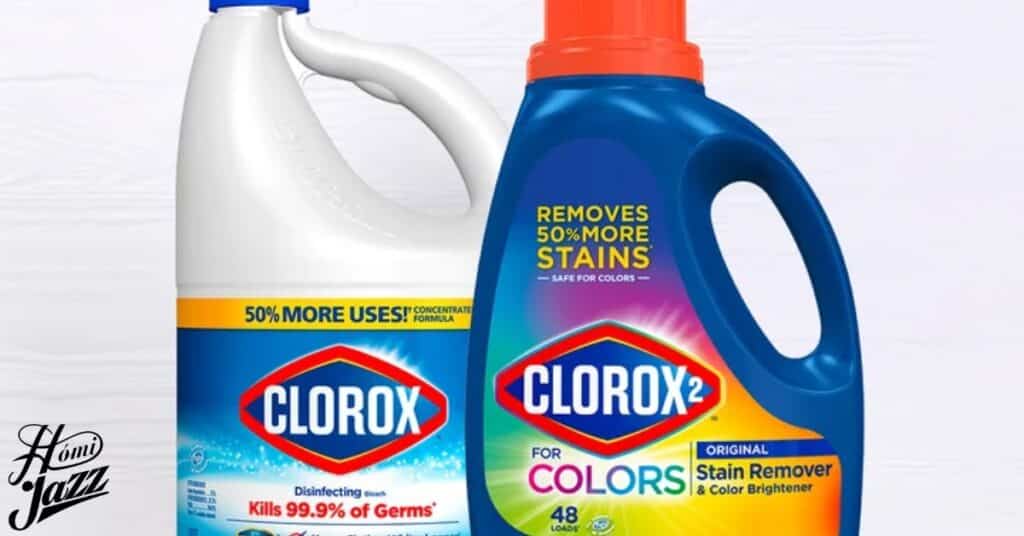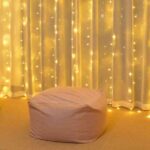Bleach and bicarbonate of soda are popular household cleaning agents, and the good news is they can safely be used together. This combination offers powerful cleaning benefits without releasing harmful fumes.
Bicarbonate of soda helps absorb odors, removes oil stains, and gently scrubs surfaces. Bleach is effective for killing bacteria, sterilizing surfaces, and removing mold and mildew. When combined, they can tackle tough cleaning tasks like whitening tile grout, cleaning washing machines, and removing stains.
However, while this mix is safe, it’s important to remember that bleach can still be hazardous. Always use it in well-ventilated areas and wear rubber gloves to protect your skin from irritation. This safe and effective pairing ensures a cleaner and fresher home without compromising safety.
Baking Soda

It also known as sodium bicarbonate, is a versatile household staple. It’s commonly used in baking as a leavening agent, reacting with acidic ingredients to produce carbon dioxide bubbles, which help the dough rise.
Aside from baking, It is popular for its cleaning properties. It’s used to absorb odors, remove stains, and act as a gentle abrasive in cleaning solutions, making it a handy and natural alternative for various household cleaning tasks.
Read this blog:http://CAN YOU USE PINE SOL FOR LAUNDRY?
Chlorine Bleach

Chlorine bleach is a powerful chemical compound commonly used for removing color from fabrics and disinfecting surfaces. Its bactericidal properties make it effective for sanitizing and sterilizing various surfaces, from countertops to laundry.
It’s essential to handle chlorine bleach with caution and follow safety guidelines. Proper ventilation, wearing gloves, and avoiding mixing bleach with other cleaning agents like ammonia or vinegar are crucial to prevent the release of harmful gasses.
What Happens When You Mix Baking Soda and Bleach?
When baking soda and bleach mix, it enhances cleaning power. This combination is safe and effective for tasks like grout cleaning and stain removal.
Safety precautions are crucial, such as proper ventilation and avoiding residues of acidic ingredients like vinegar. Mixing bleach with ammonia, vinegar, or alcohol can create harmful fumes. Always follow safety guidelines to prevent health risks.
Related Post:http://CAN YOU PUT DRANO IN THE KITCHEN SINK?
Ways to Use Baking Soda and Bleach
Here are some Ways to Use Baking Soda and Bleach:
Grout Cleaning Paste

Mixing enough baking soda with bleach to form a paste (about 1/4 cup bleach to 3/4 cup soda) yields a potent grout cleaner. It’s best reserved for intense grout cleaning tasks, effectively targeting mold, mildew, and stubborn stains.
Exercise caution when using this “bleach paste” and ensure no traces of other cleaning agents, like vinegar, are present before application. This powerful solution requires careful handling to avoid adverse reactions and achieve optimal cleaning results.
Laundry

In laundry, baking soda softens hard water and acts as a gentle abrasive and deodorizer. Combine bleach and baking soda for powerful whitening and cleaning in the washing machine. It also prevents front-loading washing machines from developing odors. Use regularly to maintain freshness and cleanliness.
General Household Stain Removal
For general household stain removal, mix water, bleach, and baking soda into a diluted solution. This combination effectively tackles stubborn stains on various surfaces like walls, window sills, and baseboards. Combine 4 cups of water, 4 teaspoons of bleach, and 1 teaspoon of baking soda for optimal cleaning results, remembering the solution’s 24-hour shelf life.
Ingredients You Should Never Mix with Bleach
In general, you want to be EXTREMELY careful never to mix any acidic ingredients with bleach. Below are a handful of specific bleach combinations you should always avoid.
With that said, I always recommend using extreme caution when mixing bleach with anything other than water (or baking soda).
Bleach and Ammonia
Mixing bleach and ammonia creates toxic chloramine gas, which can cause severe respiratory issues and other health problems. Always avoid combining these two substances to prevent exposure to harmful fumes.
Exercise caution when using bleach and ensure it is not mixed with ammonia or any other acidic ingredients to avoid creating dangerous chemical reactions. It’s essential to prioritize safety when working with cleaning products to protect yourself and your family from potential hazards.
Bleach and Vinegar
Avoid combining bleach with vinegar, as this mixture creates chlorine gas, which is toxic. This chemical reaction can cause respiratory issues, eye irritation, and other health problems. It’s essential to use bleach safely and never mix it with acidic substances like vinegar to prevent harmful fumes.
When cleaning, it is best to use bleach separately and ensure that no residues of acidic cleaners remain. Always follow safety guidelines and use bleach in well-ventilated areas to minimize the risk of exposure to harmful gasses.
Bleach and Alcohol
Mixing bleach with alcohol, such as isopropyl alcohol, can produce chloroform, a toxic compound that can cause unconsciousness and even be deadly if inhaled. It’s important to never combine bleach with alcohol or any other substances besides water or baking soda to avoid dangerous chemical reactions.
Isopropyl alcohol is a useful disinfectant on its own but should never be mixed with bleach due to the risk of chloroform production. When using bleach, always follow safety guidelines and avoid combining it with any other chemicals to prevent harmful outcomes.
Want to Disinfect Without Bleach?
If you prefer to disinfect without bleach, there are several effective alternatives available. Consider using hydrogen peroxide, which is a strong disinfectant that can kill bacteria, viruses, and mold spores. Alcohol-based disinfectants, like rubbing alcohol, are also effective at killing germs on surfaces.
Vinegar is another natural disinfectant that can be used to kill bacteria and viruses. It’s important to note that while vinegar is effective against some germs, it may not be as effective as bleach or other chemical disinfectants against certain pathogens.
Frequently Asked Question
Can I mix baking soda and bleach for cleaning?
Yes, it’s generally safe to mix baking soda and bleach for cleaning purposes.
What happens when baking soda and bleach are combined?
When combined, baking soda and bleach can enhance cleaning power for tasks like grout cleaning and stain removal.
Are there any risks associated with mixing baking soda and bleach?
While generally safe, it’s important to follow safety precautions and avoid mixing bleach with acidic ingredients.
Can I use the combination of baking soda and bleach for laundry?
Yes, combining baking soda and bleach in laundry can provide whitening and cleaning benefits, especially for whites.
What should I do before mixing baking soda and bleach?
Before mixing, ensure there are no residues of acidic ingredients like vinegar present to avoid harmful reactions.
Final Thoughts
In conclusion, mixing bleach and bicarbonate of soda is not only safe but also highly effective for various cleaning tasks around the home. This combination harnesses the strengths of both products: bleach for sanitizing and removing stains, and bicarbonate of soda for absorbing odors and acting as a gentle abrasive.
Whether you’re whitening grout or deep-cleaning surfaces, this duo provides powerful results without the risk of harmful fumes. However, it’s essential to handle bleach carefully, using it in well-ventilated spaces and wearing gloves to protect your skin.
While bleach and bicarbonate of soda are a great cleaning team, always avoid mixing bleach with other household products like vinegar, ammonia, or alcohol, which can be dangerous.

Howdy is behind this home blog, sharing personal stories, thoughts, and insights from daily life. I can dedicated to bringing you the latest trends, expert advice, and creative ideas to make your home the sanctuary you’ve always dreamed of. Whether you’re looking for DIY tips, home decor inspiration, home loans, rentals or renovations.







